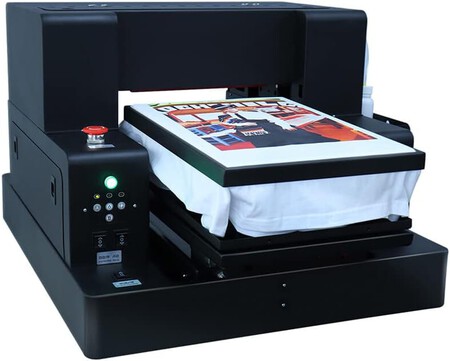If you’re considering printing your own t-shirts, it’s important to understand the different types of printers available. These machines can be expensive, which is why professionals often use them, but it never hurts to know your options.
There are three main types of t-shirt printers. Below, we break down how they work and what each is best for, giving you a basic understanding before making a decision.
Table of Contents (3)
Direct-to-Garment (DTG) Printers

The most common type is direct-to-garment (DTG) inkjet printers. These use special inks to print designs directly onto fabric, making them ideal for detailed, colorful prints—including photos.
DTG printers create soft, breathable designs on natural fabrics like cotton. However, they’re expensive, and prints must be pre-treated, though pre-treated t-shirts are available.
Heat Transfer Printers
Heat transfer printers first print designs onto special paper, which is then transferred to the shirt using heat or pressure with heat transfer plates. These printers are more affordable and allow users to apply pre-designed images, making them a popular choice for small businesses and hobbyists.
They’re also the most versatile since they can print on various materials. However, prints require careful color and pressure settings to ensure good adhesion and avoid damaging the fabric. Despite these challenges, heat transfer printers remain the most common option for making t-shirts.
Sublimation Printers

Sublimation printers use heat to transfer pigment-based inks into fabric. Instead of applying ink to the surface, heat turns the ink into a gas, allowing it to penetrate polyester fibers or polymer-coated substrates.
Since the design becomes part of the fabric, sublimation prints are long-lasting and resistant to fading. However, these printers can only be used on certain materials—they don’t work on cotton. Additionally, they require a heat press, which adds to the overall cost.
Image | Alexey Demidov edited by Xataka On
Related | I Tried the ‘Buying a New Printer Is Cheaper Than Buying Printer Ink’ Approach, But It Didn’t Work



Log in to leave a comment